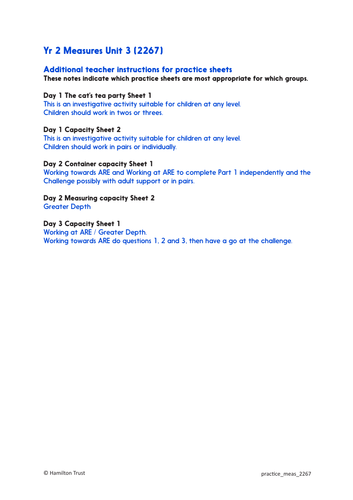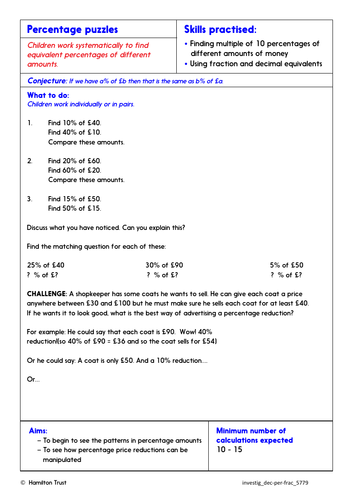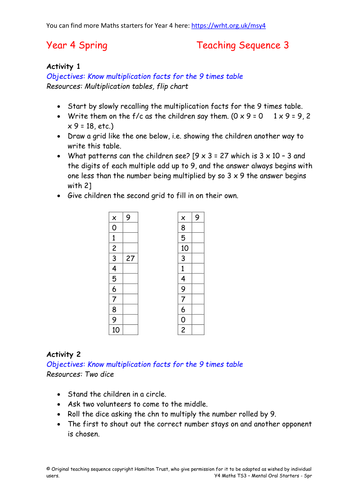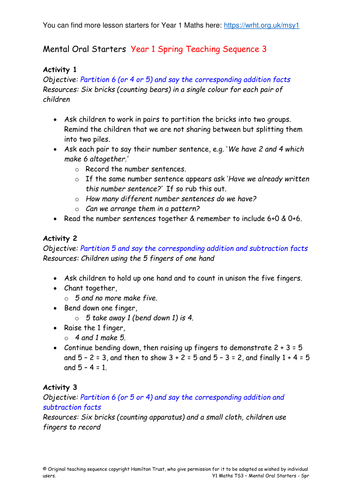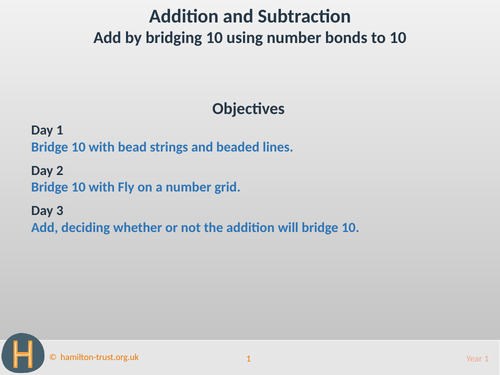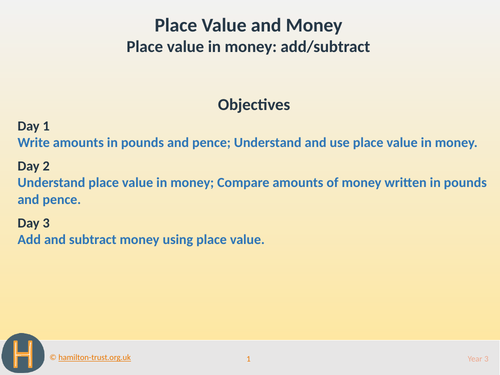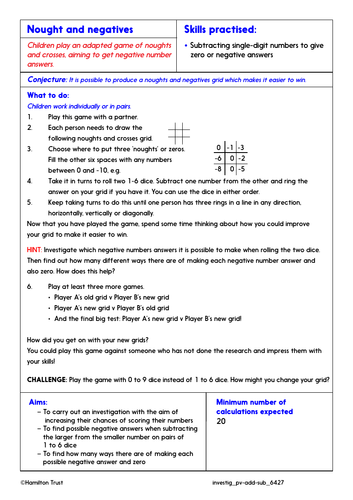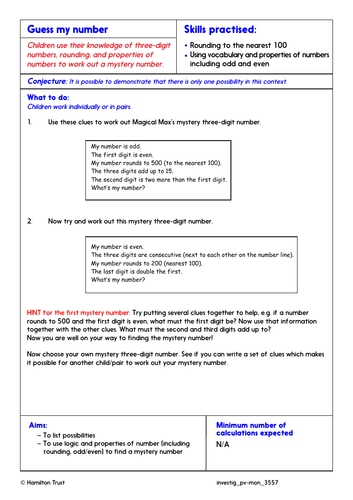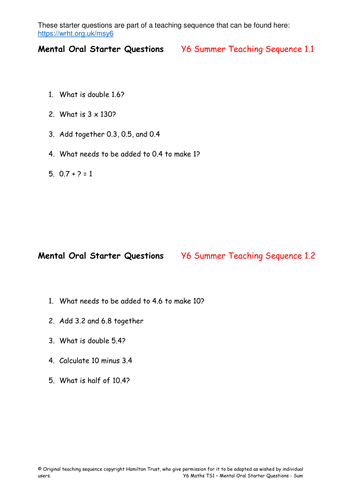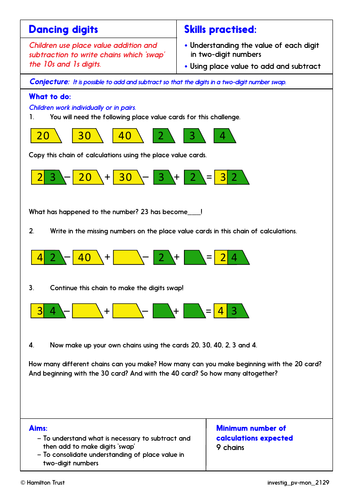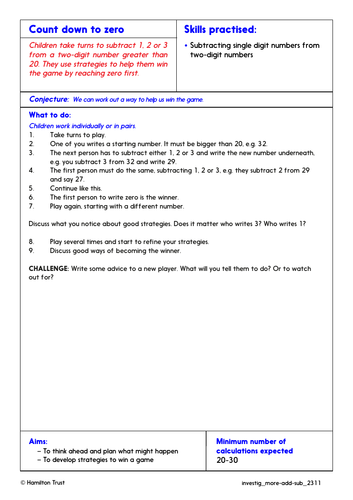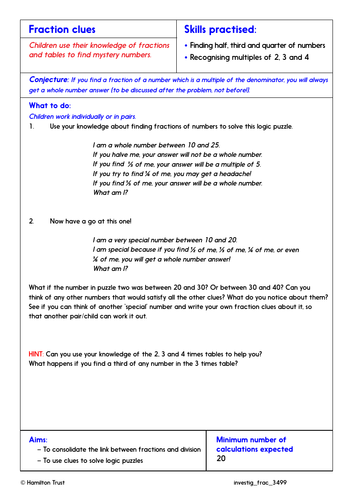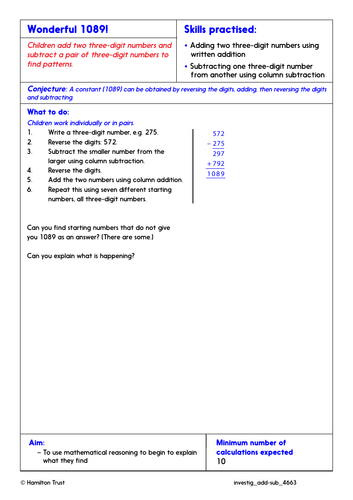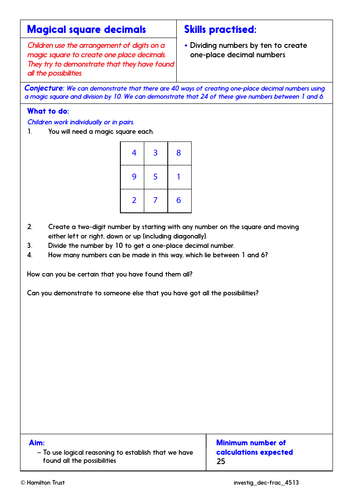
3k+Uploads
9988k+Views
11603k+Downloads
Mathematics

Practice Worksheets: Measure capacities in half litres and litres (Year 2 Measures)
Year 2 Measures: Measure capacities in half litres and litres.
Procedural fluency Practice Worksheets to achieve maths mastery. Differentiated for children working towards Age Related Expectations (ARE), at ARE and at greater depth.
Day 1
Investigate the numbers of mugs that can be poured from a teapot of given capacity. Make paper containers, then compare and estimate their capacities.
Day 2
Sort a variety of containers under headings: more than 1 litre and less than 1 litre.
Interpret capacity data from a bar graph.
Day 3
Estimate and order container capacity relative to 1/2 a litre and 1 litre.
These procedural fluency practice sheets are part of our Year 2 Measures block. Each Hamilton maths block contains a complete set of planning and resources to teach a terms worth of objectives for one of the National Curriculum for England’s maths areas.

Doubling and halving - Teaching Presentation - Year 1
This presentation provides two days of teaching that cover the objectives:
Doubling numbers.
Halving numbers.
It includes starter activities, whole class teaching, group activities, practice sheets and mastery questions. It can be used on a variety of interactive whiteboards.
Day 1 Teaching
Explain that when we double a number we add the same amount again, e.g. 2 doubled is 2 + 2 = 4, 3 doubled is 3 + 3 = 6, etc. What is double 10? 10 + 10 = 20. Double 11? We double the 10, (20) and then double the 1 (2). Recombine these amounts to give a total of 22. Provide a visual representation to support visualisation, using base-10 equipment (e.g. Dienes cubes or number shapes such as NumiconTM) to model the partitioning, doubling and recombining steps. Repeat with 12, 13 and 14.
Day 2 Teaching
Explain that halving is sharing the number between two. Demonstrate by sharing four sweets between two children. Repeat with other even numbers up to 20. Odd numbers are harder to share as there is always one left over. Display a bar model to show double 8 is 16. Use this to halve 16. As last time, providing a visual representation using base-10 equipment will support partitioning, halving and recombining.
This teaching is part of Hamilton’s Year 1 Multiplcation, Division and Fractions block. Each Hamilton maths block contains a complete set of planning and resources to teach a term’s worth of objectives for one of the National Curriculum for England’s maths areas.

Begin to understand percentages - Problem-Solving Investigation - Year 5
This in-depth maths investigation is an open-ended problem solving activity for Year 4 children. It can be used to support teaching towards the objectives: Begin to understand percentages.
In depth Investigation: Percentage Puzzles
Children work systematically to find equivalent percentages of different amounts.
This investigation will develop maths meta-skills, support open-ended questioning and logical reasoning, and enable children to learn to think mathematically and articulate mathematical ideas.
This problem-solving investigation is part of our Year 5 Decimals, Percentages, Fractions block. Each Hamilton maths block contains a complete set of planning and resources to teach a term’s worth of objectives for one of the National Curriculum for England’s maths areas.

Mental Oral Starters - Year 4
Mental and oral starters for Year 4 Spring Teaching Sequence 3.
Know multiplication facts for the 9 times table. Revise multiplication facts for 2, 3, 4, 5, 9 and 10 times tables, and learn corresponding division facts. Recognise multiples of 2, 3, 4, 5, 9 and 10, up to the tenth multiple. Learn the 9 times table and begin to learn related division facts.
Find additional lesson plans and resources at www.hamilton-trust.org.uk.

Mental Oral Starters - Year 1
Mental and oral starters for Year 1 Spring Teaching Sequence 3.
Partition 5 and say the corresponding addition and subtraction facts. Partition 6 (or 5 or 4) and say the corresponding addition and subtraction facts.
Find additional lesson plans and resources at www.hamilton-trust.org.uk.

Add by bridging 10 using number bonds to 10 - Teaching Presentation - Year 1
This presentation provides three days of teaching that cover the objectives:
Bridge 10 with bead strings and beaded lines.
Bridge 10 with Fly on a number grid.
Add, deciding whether or not the addition will bridge 10.
It includes starter activities, whole class teaching, group activities, practice sheets and mastery questions. It can be used on a variety of interactive whiteboards.
Day 1 Teaching
Show children the bead bar. Slide 8 beads to one side. Model adding 3 by sliding 2 beads to make 10, then 1 more. Repeat to show 7 add 5 by adding 3 to make 10 and then adding 2 more beads. When we add in two steps like this, stopping at 10, we call it bridging 10. Repeat, to find 8 + 5, 6 + 5 and 9 + 6, bridging 10 on the bead bar, with children replicating on bead strings.
Day 2 Teaching
Show children a 1-100 number grid and Fly. Remind them that Fly can make a short flight to the next 10 from any number. Demonstrate adding 5 to 25 using Fly. Then model adding 5 to 17, using Fly to go to 20 first, and then counting on 2 more. Record: 17 + 5 = 22. Do you see how we bridged 20, a 10s number? Repeat for 28 + 6 and 36 + 5.
Day 3 Teaching
Use a 100 bead bar to show children 36 + 5, an addition bridging 10. Then discuss how we can recognise if an addition will need to cross a 10s number. Repeat for 57 + 4 and 35 + 7. Model drawing hops for 35 + 7 on a beaded line.
This teaching is part of Hamilton’s Year 1 More Addition and Subtraction block. Each Hamilton maths block contains a complete set of planning and resources to teach a term’s worth of objectives for one of the National Curriculum for England’s maths areas.

Teaching Presentation: Place value in money: add/subtract. (Year 3 Place Value and Money)
This presentation provides three days of teaching that cover the objectives:
Develop understanding of place value in money.
Use to add and subtract.
It includes starter activities, whole class teaching, group activities, practice sheets and mastery questions. It can be used on a variety of interactive whiteboards.
Day 1 Teaching
Show 3 large pound coins, a 50p coin and a 2p coin (or IWB coins). How much money is here? How can we write it? Revise how we write this as £3.52. Rehearse writing amounts of money.
Day 2 Teaching
Display the Money place value grid (see resources). Remind children how to write amounts in £ and p. Write amounts including those containing 0 on the PV grid. Compare the amounts using symbols.
Day 3 Teaching
Play the ‘Nasty Game’ and record place value additions such as £2 + 30p + 5p, £2.05 + 30p, etc. Check all possibilities. Ensure children are confident in writing amounts such as £2.05 and do not write this as £2.5. Ask children to write subtraction sentences for same amount.
This teaching is part of Hamilton’s Year 3 Place Value and Money block. Each Hamilton maths block contains a complete set of planning and resources to teach a term’s worth of objectives for one of the National Curriculum for England’s maths areas.

Understand/calculate negative numbers - Problem-Solving Investigation - Year 6
This in-depth maths investigation is an open-ended problem solving activity for Year 6 children. It can be used to support teaching towards the place value, addition and subtraction objectives: understand negative numbers and perform calculations across 0.
In-depth Investigation: Noughts and Negatives
Children play an adapted game of noughts and crosses, aiming to get negative number answers.
This investigation will develop maths meta-skills, support open-ended questioning and logical reasoning, and enable children to learn to think mathematically and articulate mathematical ideas.
This problem-solving investigation is part of our Year 6 Place Value, Addition and Subtraction block. Each Hamilton maths block contains a complete set of planning and resources to teach a term’s worth of objectives for one of the National Curriculum for England’s maths areas.

Add numbers with up to 3 decimal places - Problem-Solving Investigation - Year 6
This in-depth maths investigation is an open-ended problem solving activity for Year 6 children. It can be used to support teaching towards objective: Add numbers with up to three decimal places.
In-depth Investigation: Decimal Pyramids
Children add numbers with 3 decimal places to give a number with 2 decimal places. They add numbers with 2 decimal places to give a number with 1 decimal place. They then add numbers with 1 decimal place to give a whole number.
This investigation will develop maths meta-skills, support open-ended questioning and logical reasoning, and enable children to learn to think mathematically and articulate mathematical ideas.
This problem-solving investigation is part of our Year 6 Decimals and Fractions block. Each Hamilton maths block contains a complete set of planning and resources to teach a term’s worth of objectives for one of the National Curriculum for England’s maths areas.

Represent 3-digit numbers in diff ways - Problem-Solving Investigation - Year 3
Year 3 Place Value and Money: Represent 3-digit numbers in many different ways; round numbers to 10 and 100.
This in-depth maths investigation will develop maths meta-skills, and enable children to learn to think mathematically and articulate mathematical ideas.
In-depth Investigation: Guess my Number
Children use their knowledge of 3-digit numbers, rounding, and properties of numbers to work out a mystery number.
This problem-solving investigation is part of our Year 3 Place Value and Money block. Each Hamilton maths block contains a complete set of planning and resources to teach a term’s worth of objectives for one of the National Curriculum for England’s maths areas.
Bundle

Year 3 Fractions - Problem-Solving Investigations
These in-depth maths investigations are open-ended problem solving activities for Year 3 children.
In-depth Investigation: Fraction Clues
Children use their knowledge of fractions and tables to find mystery numbers.
In-depth Investigation: Fraction Bets
Children look at fractions and make a hypothesis of which ones are closest. They then test this out by placing fractions on a line.
In-depth Investigation: Greedy Guzzler
Children explore which is the greater fraction of a set amount. They also fold strips to look at the fractions.
These investigations will develop maths meta-skills, support open-ended questioning and logical reasoning, and enable children to learn to think mathematically and articulate mathematical ideas.
These problem-solving investigations come from our Year 3 Maths Blocks. Each Hamilton maths block contains a complete set of planning and resources to teach a term’s worth of objectives for one of the National Curriculum for England’s maths areas.

Mental Oral Starter Questions - Year 6
Mental and oral starter questions for Year 6 Summer Teaching Sequence 1.
Find decimals with a total of 1 or 10. Know all multiplication and division facts for the 2 to 10 times tables.
Find additional lesson plans and resources at www.hamilton-trust.org.uk.

Problem-Solving Investigation: Understanding and identifying 2-D shapes (Year 1 Shape and Data)
Year 1 Shape and Data: Understanding and identifying 2-D shapes
This in-depth Maths Investigation will develop maths meta-skills, and enable children to learn to think mathematically and articulate mathematical ideas.
In-depth Investigation: Shape Wheels
Children make a sequence of coloured shapes, changing one attribute at a time so that the sequence can end where it started, forming a circular sequence.
This problem-solving investigation is part of our Year 1 Shape and Data block. Each Hamilton maths block contains a complete set of planning and resources to teach a terms worth of objectives for one of the National Curriculum for England’s maths areas.

Problem-Solving Investigation: Place value in 2-digit numbers (Year 2 Place Value and Money)
Year 2 Place Value and Money: Place value in 2-digit numbers.
This in-depth Maths Investigation will develop maths meta-skills, and enable children to learn to think mathematically and articulate mathematical ideas.
In-depth Investigation: Dancing Digits
Children use place value addition and subtraction to write chains which ‘swap’ the 10s and 1s digits.
This problem-solving investigation is part of our Year 2 Place Value and Money block. Each Hamilton maths block contains a complete set of planning and resources to teach a terms worth of objectives for one of the National Curriculum for England’s maths areas.

Practice Worksheets: Add/subtract 11, 12, 21, 22, etc (Year 2 More Addition and Subtraction)
Year 2 More Addition and Subtraction: Add/subtract 11, 12, 21, 22, etc. to/from 2-digit numbers.
Procedural fluency Practice Worksheets to achieve maths mastery. Differentiated for children working towards Age Related Expectations (ARE), at ARE and at greater depth.
Day 1
Most children create their own questions by selecting pairs of numbers to add. Some will complete a challenge involving missing numbers.
Day 2
Children are set different challenges to add 11, 12, 13, 21, 22, 23, 31, 32 or 33 to other 2-digit numbers; answers ≤110.
Day 3
Children calculate which of a set of given numbers is required to make a set of given calculations correct.
These procedural fluency practice sheets are part of our Year 2 More Addition and Subtraction block. Each Hamilton maths block contains a complete set of planning and resources to teach a terms worth of objectives for one of the National Curriculum for England’s maths areas.

Problem-Solving Investigation: Add/subtract 11, 12, 21, 22, etc (Year 2 More Addition & Subtraction)
Year 2 More Addition and Subtraction: Add/subtract 11, 12, 21, 22, etc. to/from 2-digit numbers.
This in-depth Maths Investigation will develop maths meta-skills, and enable children to learn to think mathematically and articulate mathematical ideas.
In-depth Investigation: Count Down to Zero
Children take turns to subtract 1, 2 or 3 from a 2-digit number greater than 20. They use strategies to help them win a game by reaching zero first.
This problem-solving investigation is part of our Year 2 More Addition and Subtraction block. Each Hamilton maths block contains a complete set of planning and resources to teach a terms worth of objectives for one of the National Curriculum for England’s maths areas.

Finding 1/2, 1/4, 3/4, 1/3, 2/3 of amounts - Problem-Solving Investigation - Year 3
This in-depth maths investigation is an open-ended problem solving activity for Year 3 children. It can be used to support teaching towards the objectives: Finding 1/2, 1/4, 3/4, 1/3, 2/3 of amounts.
In-depth Investigation: Fraction Clues
Children use their knowledge of fractions and tables to find mystery numbers.
This investigation will develop maths meta-skills, support open-ended questioning and logical reasoning, and enable children to learn to think mathematically and articulate mathematical ideas.
This problem-solving investigation is part of our Year 3 Fractions block. Each Hamilton maths block contains a complete set of planning and resources to teach a term’s worth of objectives for one of the National Curriculum for England’s maths areas.

Develop the concept of fractions - Problem-Solving Investigation - Year 3
This in-depth maths investigation is an open-ended problem solving activity for Year 3 children. It can be used to support teaching towards the objectives: Develop the concept of fractions.
In-depth Investigation: Fraction Bets
Children look at fractions and make a hypothesis of which ones are closest. They then test this out by placing fractions on a line.
This investigation will develop maths meta-skills, support open-ended questioning and logical reasoning, and enable children to learn to think mathematically and articulate mathematical ideas.
This problem-solving investigation is part of our Year 3 Fractions block. Each Hamilton maths block contains a complete set of planning and resources to teach a term’s worth of objectives for one of the National Curriculum for England’s maths areas.

Subtraction strategies; written methods - Problem-solving Investigation - Year 4
This in-depth maths investigation is an open-ended problem solving activity for Year 4 children. It can be used to support teaching towards the objectives : Subtraction: written methods and choosing strategies
In-depth Investigation: Wonderful 1089!
Children add two 3-digit numbers and subtract a pair of 3-digit numbers to find patterns. They use mathematical reasoning to begin to explain what they find.
This investigation will develop maths meta-skills, support open-ended questioning and logical reasoning, and enable children to learn to think mathematically and articulate mathematical ideas.
This problem-solving investigation is part of our Year 4 Addition and Subtraction block. Each Hamilton maths block contains a complete set of planning and resources to teach a term’s worth of objectives for one of the National Curriculum for England’s maths areas.

Introduction to one place decimals - Problem-Solving Investigations - Year 4
This in-depth maths investigation is an open-ended problem solving activity for Year 4 children. It can be used to support teaching towards the objectives: Introduction to one place decimals.
In-depth Investigation: Magical Square Decimals
Children use the arrangement of digits on a magic square to create one place decimals. They try to demonstrate that they have found all the possibilities.
This investigation will develop maths meta-skills, support open-ended questioning and logical reasoning, and enable children to learn to think mathematically and articulate mathematical ideas.
This problem-solving investigation is part of our Year 4 Decimals and Fractions block. Each Hamilton maths block contains a complete set of planning and resources to teach a term’s worth of objectives for one of the National Curriculum for England’s maths areas.

